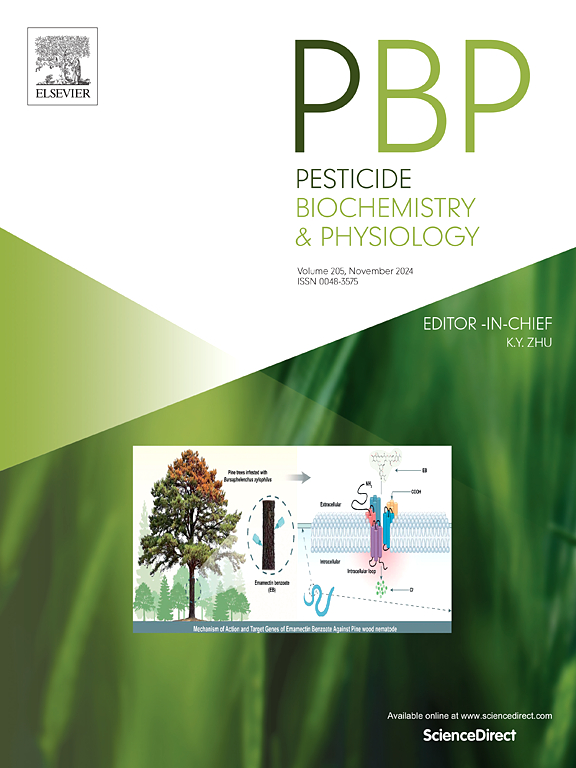Interaction between imidacloprid residues in maize rhizospheric soil and soil nematode community
IF 4.2
1区 农林科学
Q2 BIOCHEMISTRY & MOLECULAR BIOLOGY
引用次数: 0
Abstract
Although imidacloprid has been shown to present potential risks to non-target invertebrates and vertebrates, researches exploring this risk from the perspective of the underground ecosystem remains incomplete. In this study, we determined that the presence of imidacloprid significantly reduced the abundance and diversity of soil nematodes in maize rhizospheric soil. Furthermore, imidacloprid also exerted negative effects on the body length, reproduction, locomotion, lipid accumulation, lipofuscin accumulation, and acetylcholinesterase activity in the model organism Caenorhabditis elegans. These toxic phenotypes are correlated with the upregulation of fat-2, fat-6, hsp-16.41, and hsp-16.2, along with the downregulation of ace-1, ace-2, and ace-3. In response to these toxic effects of imidacloprid, nematodes also developed corresponding adaptive mechanisms. UPLC-MS/MS analysis revealed that nematodes could convert imidacloprid to imidacloprid-guanidine and imidacloprid-urea to reduce the toxicity of imidacloprid. Moreover, C. elegans and Meloidogyne incognita exhibited repellent behavior towards imidacloprid-treated area, even the concentration of imidacloprid is only 0.4 μg/mL. This study revealed the interaction between imidacloprid and nematodes, providing a basis for understanding the potential risks of non-target soil nematodes after application of imidacloprid in sustainable agriculture and the resistance mechanism of nematodes to nematocidal pesticide.

求助全文
约1分钟内获得全文
求助全文
来源期刊
CiteScore
7.00
自引率
8.50%
发文量
238
审稿时长
4.2 months
期刊介绍:
Pesticide Biochemistry and Physiology publishes original scientific articles pertaining to the mode of action of plant protection agents such as insecticides, fungicides, herbicides, and similar compounds, including nonlethal pest control agents, biosynthesis of pheromones, hormones, and plant resistance agents. Manuscripts may include a biochemical, physiological, or molecular study for an understanding of comparative toxicology or selective toxicity of both target and nontarget organisms. Particular interest will be given to studies on the molecular biology of pest control, toxicology, and pesticide resistance.
Research Areas Emphasized Include the Biochemistry and Physiology of:
• Comparative toxicity
• Mode of action
• Pathophysiology
• Plant growth regulators
• Resistance
• Other effects of pesticides on both parasites and hosts.
文献相关原料
公司名称
产品信息
索莱宝
Acetylcholinesterase (AChE) Activity Assay Kit
麦克林
imidacloprid
麦克林
formic acid

 求助内容:
求助内容: 应助结果提醒方式:
应助结果提醒方式:


